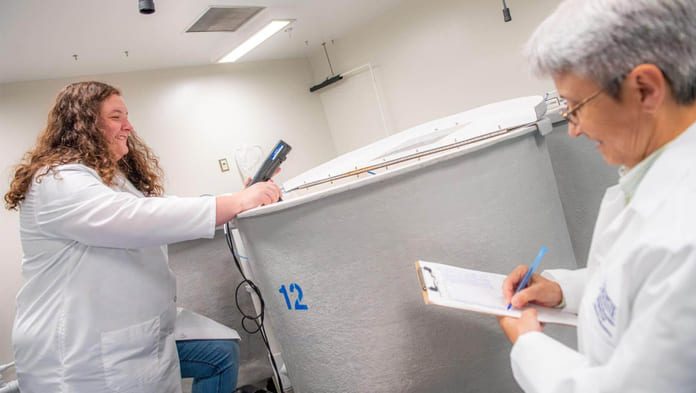Global aquaculture industry loses more than US$6 billion per year to disease outbreaks.
The U.S. Department of Agriculture’s National Institute of Food and Agriculture (NIFA) has awarded a team of scientists from the University of Maine US$495,000 to investigate if novel nanocellulose vaccines could protect Atlantic salmon against lethal pathogens.
The award is part of a series of ongoing efforts to support Maine and the nation’s growing finfish aquaculture industry.
According to a press release issued by the University of Maine, the project will target vaccine development to combat Infectious Salmon Anemia Virus and Vibrio ordalii, two globally significant Atlantic salmon pathogens. Researchers hope this project will lay the groundwork for using nanocellulose in future vaccine formulations to protect against many other types of diseases impacting aquaculture and agriculture.
Nanocellulose is a biologically derived natural polymer found in the cell walls of wood and plants and may offer several benefits as a vaccine component. Nanocellulose is considered to be biocompatible, meaning it has no known harmful effects to tissue and is unlikely to cause cellular damage.
Maine is the most densely forested state in the US with 89.5 per cent of the land covered in woods for an estimated 17.6 million acres of forest land. And the renewable wood pulp industry has long been one of the most important industries in the state.
Less expensive to manufacture
Vaccines developed with nanocellulose may also be less expensive to manufacture than their oil-based counterparts, researchers say. Its chemical properties allow it to be easily modified and could help increase the effectiveness and longevity of the vaccine without the associated undesired side effects of traditional fish vaccine adjuvants, according to University of Maine researchers.
Injectable vaccines are presently the most effective form for protecting aquacultured fish species, but current vaccines made with adjuvants that are water and oil based are expensive to make and can cause undesired side effects resulting in decreased growth rates and adhesions and pigmentation around the injection site.
“Nanocellulose could potentially be a sustainable option for aquatic animal vaccines providing an economic solution for managing disease in commercially important species,” said project lead Deborah Bouchard, director of the Aquaculture Research Institute (ARI) at the University of Maine.
Disease among fish stocks can be costly for finfish producers, with the Food and Agriculture Organization of the United Nations reporting in 2018 that the global aquaculture industry loses more than US$6 billion per year to outbreaks. As the aquaculture industry grows, so does the risk of disease.
Potential for billions of dollars in savings
Infectious Salmon Anemia Virus causes Infectious Salmon Anemia, which can kill up to 90 per cent of a producer’s Atlantic salmon during an outbreak, according to researchers. Annually occurring outbreaks of Infectious Salmon Anemia have cost producers millions of dollars. Vibrio ordalii causes vibriosis, which can also cause 90 per cent mortality in salmon farms and cost the global aquaculture industry more than US$1 billion in losses each year, researchers said.
“The market demand for Atlantic salmon continues to rise. The future sustainability of the Atlantic salmon aquaculture industry will rely on our ability to maintain healthy cultured populations and effective vaccines are a critical tool for achieving this,” said Bouchard.
ARI researchers plan to share the study results and develop licensing agreements and commercialization strategies through industry sponsorships and/or programs like the Small Business Technology Transfer program coordinated by the Small Business Administration.


